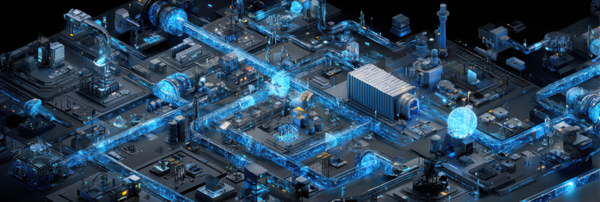How Agentic AI Will Reshape the Work of Data & AI Teams — and What to Do About It
Agentic AI shifts data & AI teams from building pipelines to orchestrating workflows, making decisions, and using metadata. It needs new team structures, AI-native tools, system-outcome focus, and closer collaboration with business and software.

We’re entering the agent era. Is your team ready?
Large Language Models have already changed how we interact with data. But the rise of agentic AI — systems that reason, take action, and adapt — goes even further.
These agents don’t just answer questions. They perform tasks, orchestrate workflows, and make real-time decisions.That changes everything for data & AI teams.If you’re still focused on dashboards, isolated models, or batch pipelines, you’re building for the past.
From models and pipelines to intelligent systems
Agentic AI shifts the purpose of the work we’ve done for years.
Here’s how typical tasks are evolving:
What’s changing:
- From building data pipelines → to agents that orchestrate and generate workflows
- From predictive models → to agents that combine models with reasoning
- From dashboards → to agents that make or automate decisions
- From manual cataloging → to agents that explore and reason over metadata
It doesn’t mean your work disappears.But it needs a new goal: to enable AI systems that interact, learn, and deliver outcomes.
What Needs to Change (Internally)
Agentic AI forces a new operating model.Here’s how to structure your team for what’s coming next:
Teams → From data silos to product pods
- Form cross-functional pods focused on capabilities, not temporary project scopes (e.g. “real-time pricing”, “intelligent service agents”, “AI-driven compliance automation”)
- This model works especially well for system integrators and consulting teams:- Align pods with industry-specific use cases like “agent-based claims processing” or “AI for smart grid operations”- Or build platform capabilities such as “LLMOps and Prompt Engineering” or “Vector Store & Retrieval Frameworks”
- Each pod owns a capability from architecture to deployment — including accelerators, reusable patterns, and governance
- The shift is from PoCs and slideware to repeatable, production-grade outcomes
Tooling → From static pipelines to AI-native platforms
- Replace batch processing with streaming and event-driven architectures
- Adopt orchestration tools that support LLM chaining, vector search, memory, and tool use
- Build observability in: logging, auditing, and real-time feedback for autonomous agents
- Make data quality and governance operational:- Validate inputs continuously- Track lineage across agent workflows- Enforce access, retention, and fallback policies by design
In an AI-first setup, governance isn’t a gate — it’s part of how intelligent systems run safely and reliably.
Mindset → From model accuracy to system outcomes
- Agentic AI isn’t just about prediction — it’s about behavior
- Prioritize task success, reliability, and continuous learning
- Learn to evaluate agents like you evaluate products: usage, satisfaction, and impact
Ways of Working → Co-create with software and business
- Collaborate early with software engineers (infrastructure, APIs, delivery)
- Involve business teams from the start — defining tasks, testing behavior, owning value
- Align on clear business outcomes:- How many decisions are being automated?- How much time or cost is being saved?- Are customer actions improving as a result?
AI performance isn’t about precision — it’s about how well it supports the business in real-world workflows.
What Skills Will Matter
To stay relevant, teams should start building strength in:
Data:
- Real-time pipelines
- Data products
- Embeddings and vector stores
AI:
- Prompt design
- Agent orchestration
- LLM safety and evaluation
Engineering:
- API-first architecture
- DevOps and CI/CD
- Event streaming
Product:
- Capability framing
- Task definition
- Iterative feedback loops
Governance:
- Human-in-loop design
- Fallback logic
- Explainability and accountability
Final Thought
Agentic AI turns data & AI teams into designers of intelligent behavior.
This shift is big — but it’s also exciting.
It’s no longer about optimizing pipelines or fine-tuning a model.It’s about building AI that thinks, acts, and learns — and making that work in production.
And the teams that embrace this now… will lead what’s next.




